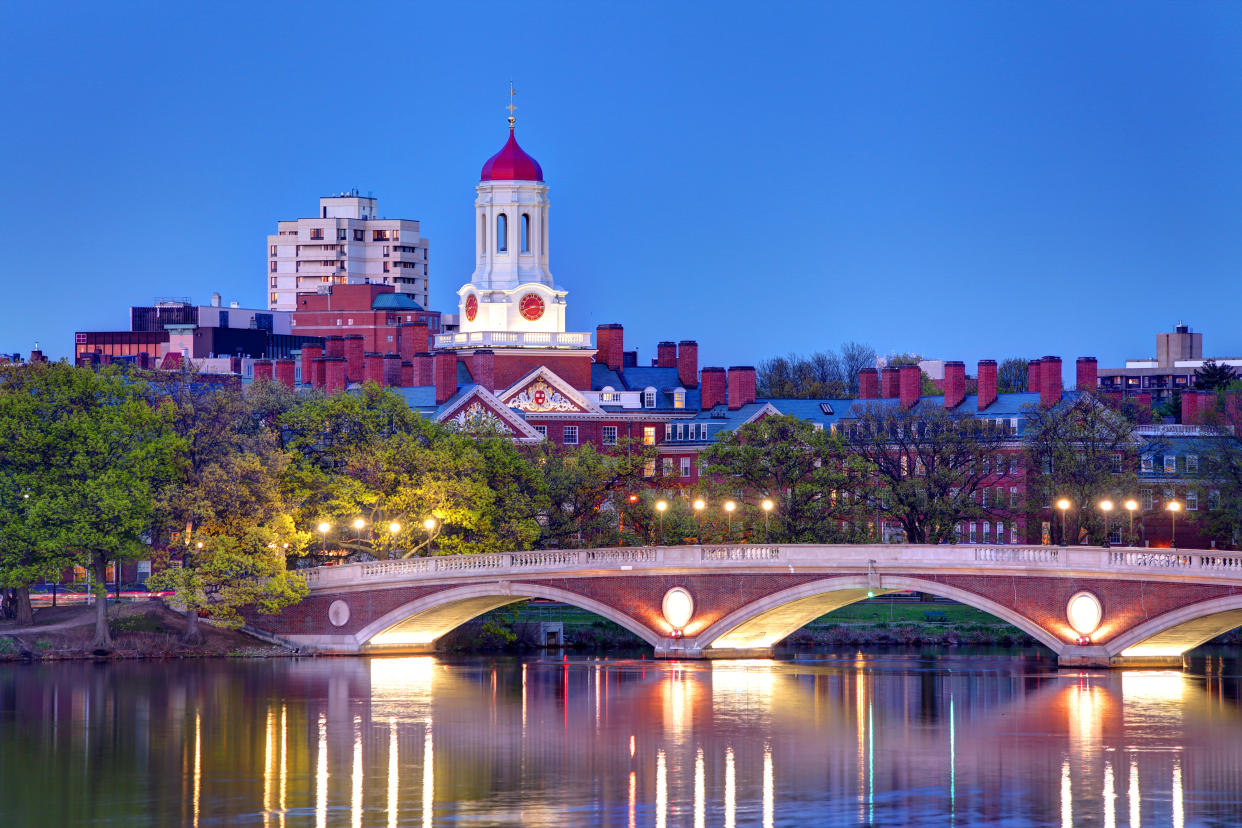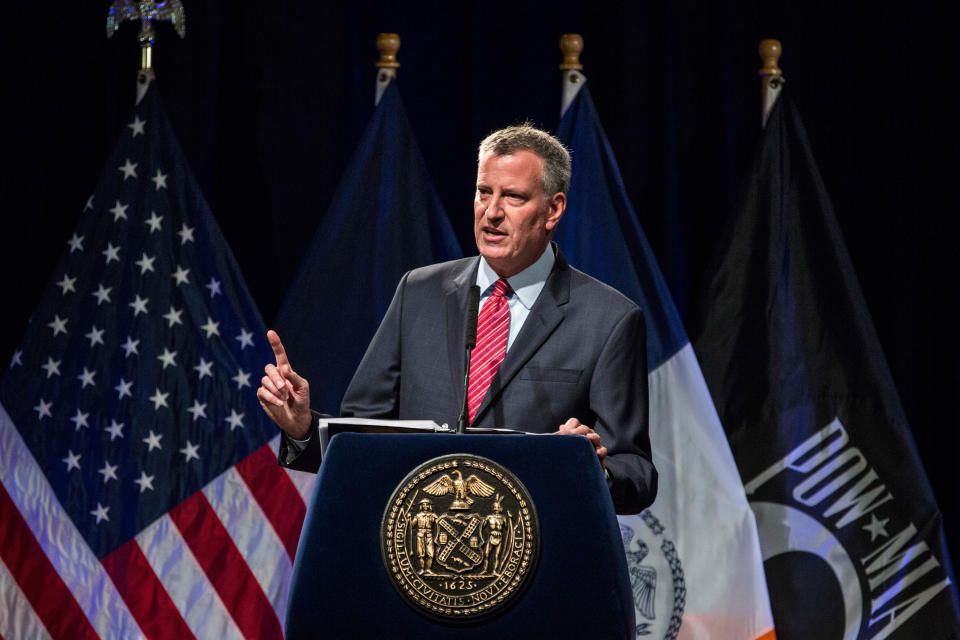Racial imbalance? Admissions policies at Harvard and Stuyvesant HS under scrutiny

Two school admissions policies made news last week for opposite reasons — Harvard University, because it is accused of admitting too few Asian-American students, and New York’s most selective public schools, because the city’s mayor thinks it is admitting too many.
Taken together, they illustrate the dilemma faced by the gatekeepers to the most desirable educational opportunities, continually tweaking their formulas and always accused of discriminating against one group or another. As admissions at the nation’s most competitive schools become evermore competitive — Harvard admitted 4.59 percent of applicants this year, while the acceptance rate at New York’s Stuyvesant High School has been estimated at 17 percent — the controversies are a reminder that every change in the admissions equation that increases the chances of members of one group inevitably disadvantage others.
Both situations also reflect the fact that Asian-American students tend to excel academically, particularly on standardized achievement tests.
The Harvard news came late last week, in the form of documents filed in an ongoing affirmative action lawsuit contending that the nation’s most prestigious university discriminates against Asian-American applicants. The suit, which is expected to eventually make its way to the Supreme Court, was filed in Boston by Students for Fair Admissions, a group led by Edward Blum, who has also brought several anti-affirmative action cases in recent years. He participated in a suit seeking to overturn admission policies at the University of Texas that he said discriminated in favor of African-American candidates. In 2016 the Supreme Court let the Texas policy stand. In a series of cases the Court has held that while race can be a factor in college admissions it cannot be the only factor.
The documents in the Harvard case, based on what the plaintiffs say is a review of applicant data for the incoming classes of the past five years, examines Harvard’s measure of nonacademic qualities in applicants — such subjective things as being likable, respected, funny, moral and kind. It concludes that while Asian-American applicants on average had better test scores and GPAs than other candidates, they received lower ratings from admission officers on their personalities.
Based just on academic criteria, the plaintiffs allege, the percentage of Asian-Americans admitted to Harvard would be about 43 percent, compared to the 23 percent in the most recent class. Harvard, in response, accused the group of cherry-picking their findings by using test results and grades as the sole measures of achievement. “Mr. Blum and his organization’s incomplete and misleading data analysis paint a dangerously inaccurate picture of Harvard College’s whole-person admissions process by omitting critical data and information factors, such as personal essays and teacher recommendations that directly counter his arguments,” said Anna Cowenhoven, a spokeswoman for Harvard, in a statement.
Harvard’s president Drew Gilpin Faust defended the holistic practice on somewhat different grounds. In an open letter to that university’s community, she wrote that the resulting diversity was essential to an educational institution.
“I have affirmed in the past, and do so again today,” she wrote, “that Harvard will vigorously defend its longstanding values and the processes by which it seeks to create a diverse educational community. We will stand behind an approach that has been held up as legal and fair by the Supreme Court, one that relies on broad and extensive outreach to exceptional students in order to attract excellence from all backgrounds.”
Harvard keeps its admission formula a closely held secret, so the glimpses into the process provided by the documents quickly became a trending topic among prospective students on college-admissions websites. “What would be the result,” if the lawsuit successfully forces the school to change that process,” wondered one member of the website College Confidential on a now closed discussion thread. “Harvard forced to only consider objective qualities of applicants? Scores and grades only?”

In fact, that is essentially the process currently in use at the most selective public schools in the New York system. Applicants at eight “specialized high schools” including Stuyvesant, Bronx High School of Science and Brooklyn Technical High School are admitted solely on the basis of their score on the Specialized High School Admission Test. The result is a school population that looks nothing like the city. Statistics show that non-Asian minorities, and even white students, are underrepresented at Stuyvesant, considered the most selective of the schools, which is 73 percent Asian, 18 percent white, 1 percent African-American and 3 percent Hispanic. New York is 11.8 percent Asian, 44.6 percent white, 25.1 percent black and 27.5 percent Hispanic.
Transparency and numeric cutoffs, said Mayor Bill de Blasio earlier this month, result in the message “for for thousands and thousands of students and neighborhoods all over New York City (that) these specialized schools aren’t for you.”
At a press conference to propose a change in the admissions procedure, he continued: “Bronx Science, it’s called Bronx Science — only 14 percent of the students come from the Bronx. Brooklyn Tech … one of the jewels in the crown of public education in this city, 3.4 percent of the students at Brooklyn Tech come from Central Brooklyn [a predominantly African-American section of the borough]. Stuyvesant admitted almost 1,000 students last time, 10 were African Americans — 1 percent, 1 percent. Under 30 were Latino, 3 percent in a city that is majority African-American and Latino. It just doesn’t make sense.”
What would make sense, he says, is eliminating the single test and replacing it with “multiple measures. Looking at the child through the prism of their ongoing accomplishment, not just how they did on one three-hour test.”
The system he proposes, which would require a change in state law, would result in “specialized schools in which 45 percent of all students will be black and Latino.” That goal would be reached by offering admission to the top 7 percent of students from every middle school, based on several criteria including standardized test scores and grades. Since many middle schools are almost entirely black or Hispanic, that would effectively guarantee admission to many more minorities. The plan is strongly opposed by representatives of the Asian-American community.
“I’m not sure if the mayor is racist, but this policy is certainly discriminatory,” said Kenneth Chiu, chairman of the New York City Asian-American Democratic Club. “It’s like the Chinese Exclusion Act, is what I think.”
While different in the details from the process at Harvard, this too would evaluate students as more than just numbers. That is just the kind of holistic approach being challenged as discriminatory in a federal court in Boston, guaranteeing plenty of work for civil rights lawyers — and judges — for years to come.
_____
Read more from Yahoo News:
The inside story of Obama’s birth certificate and the birth of fake news
California’s Gavin Newsom wants to lead the way to a post-Bernie, post-Hillary party
The Eighth Circuit strategy: How abortion foes are lining up cases to challenge Roe
Photos: Rescue ship Aquarius docks in Valencia after a weeklong odyssey at sea

